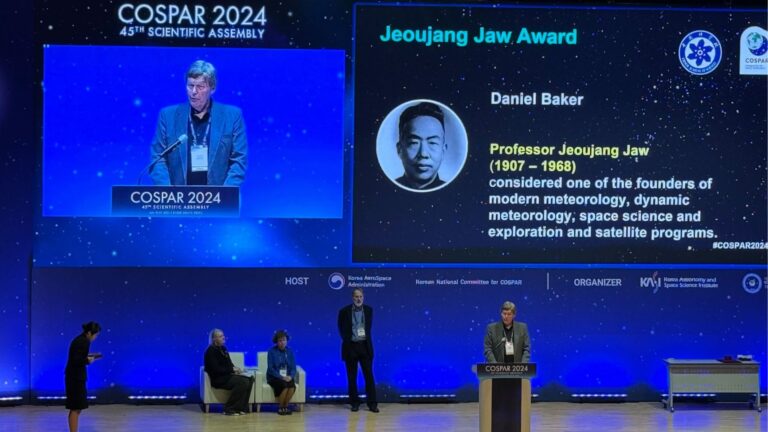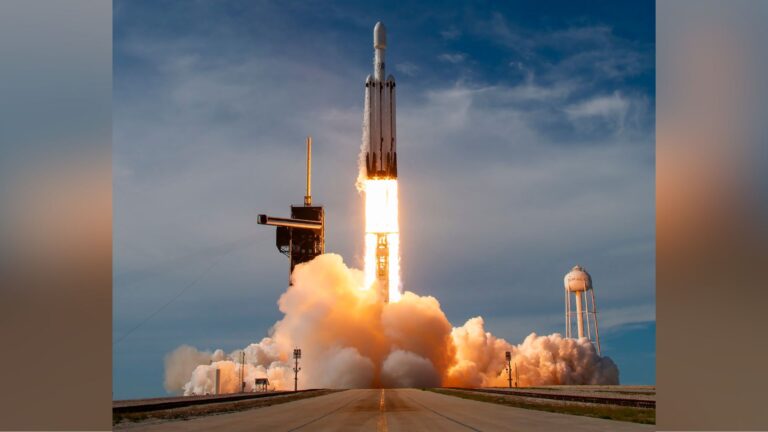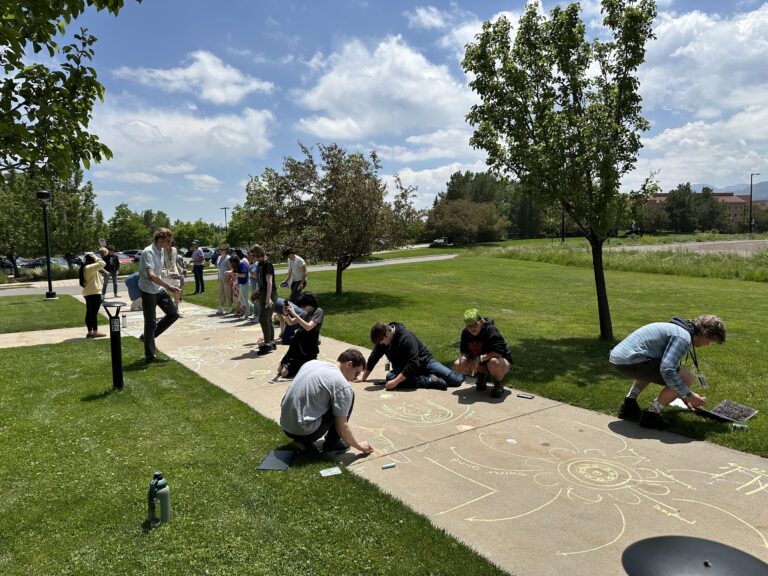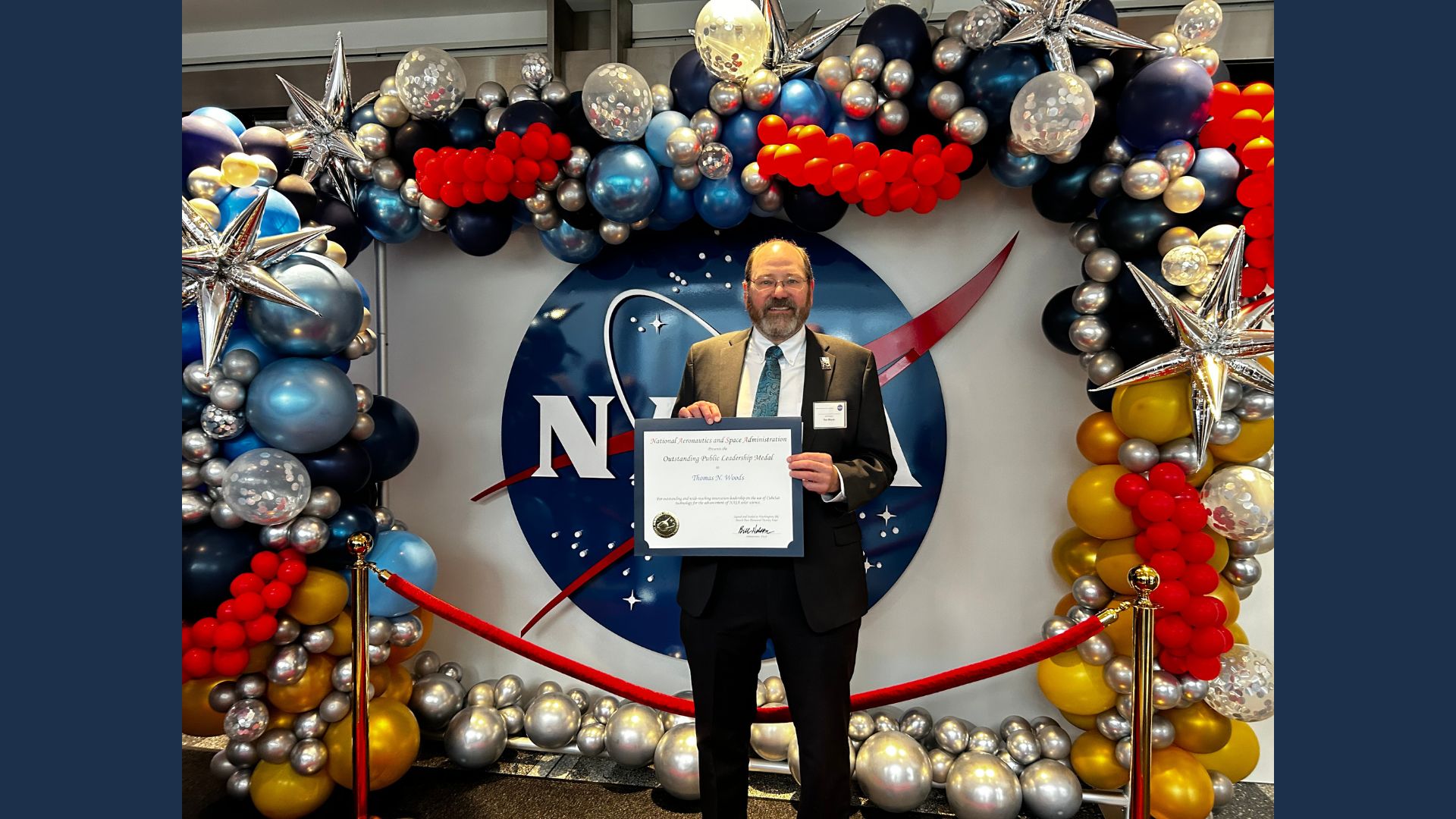
LASP researcher Tom Woods has been awarded the prestigious NASA Outstanding Public Leadership Medal for 2023. The award honors a non-governmental employee “for notable leadership accomplishments that have significantly influenced the NASA mission.” Woods was presented with the award in a ceremony at NASA Headquarters in Washington, D.C., on April 24, 2024.
Woods received the award for his leading role in establishing the use of CubeSats—specifically the Miniature X-ray Solar Spectrometer (MinXSS) program—for science missions within the NASA Science Mission Directorate (SMD). MinXSS—a student-led project to design, build, integrate, test, and operate a 3U CubeSat—was the first CubeSat science mission for NASA SMD.
“I’m humbled to have received this award as I think the MinXSS mission successes are truly a reflection of the full MinXSS team dedication and perseverance to overcome many challenges along the way,” said Woods. “The MinXSS CubeSat missions have been an exciting project working with over 80 students and staff to develop new compact instruments and spacecraft subsystems and helping to change NASA’s course towards new science and technology opportunities for these smaller satellites.”
The medal is awarded to a person who has demonstrated excellence in leading people, influencing change by developing innovative approaches, achieving impactful results, and serving as a role model. In a release announcing the awards, Nicola Fox, Associate Administrator of NASA’s Science Mission Directorate, stated that the Agency Honor Awards are NASA’s most prestigious form of recognition and are presented to individuals and teams who have distinguished themselves by making outstanding contributions to the Agency’s mission.
“Tom has demonstrated all these qualities by turning the dream of a MinXSS mission into a reality and providing exciting science findings from three tiny satellites: MinXSS-1 and -2, which launched in 2016 and 2018, and MinXSS-3, which is still operating today aboard InspireSat-1,” said LASP Director Dan Baker. “Tom and the MinXSS teams, which have included dozens of students, have significantly advanced our understanding of solar science, especially the energy distribution of solar flare soft X-ray emissions and their impact on Earth’s upper atmosphere.”
Prior to the launch of MinXSS, approximately 30 technology demonstration CubeSat missions had been flown by NASA, but MinXSS was the first with a science objective—to better understand the solar irradiance energy distribution of solar flare soft X-ray emission and its impact on Earth’s ionosphere, thermosphere, and mesosphere. Energy from soft X-ray radiation is deposited mostly in a region of the ionosphere that ranges from about 80 to 150 kilometers altitude.
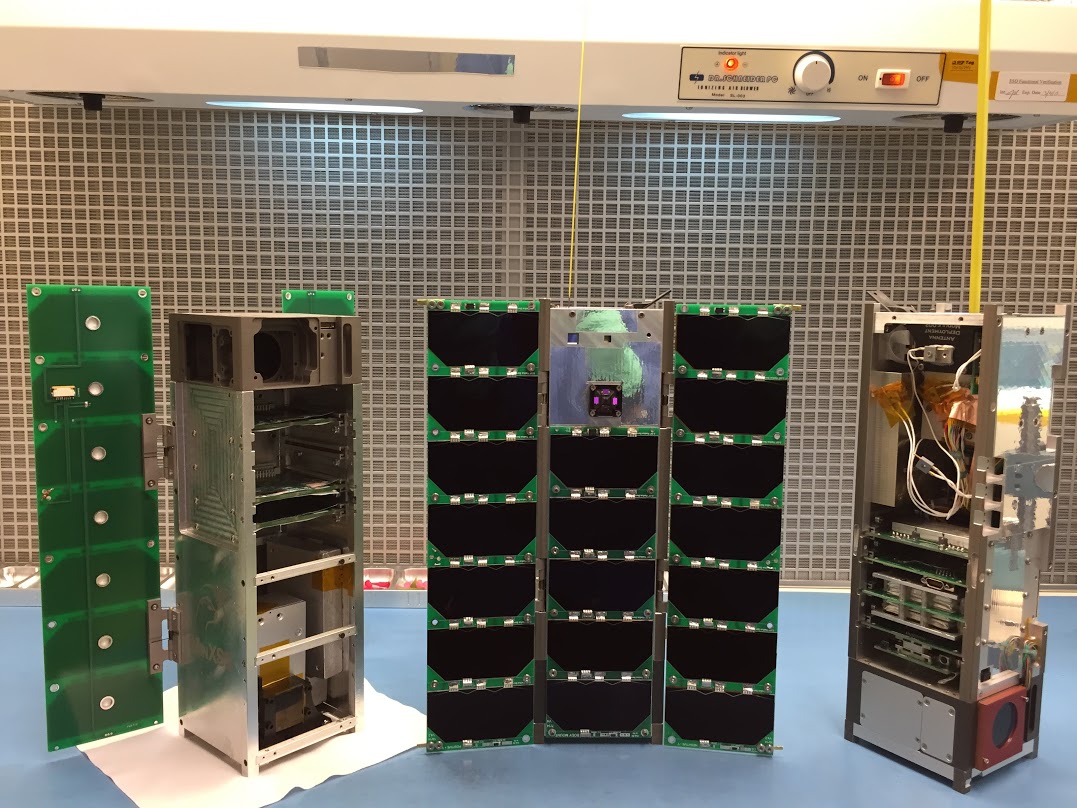
MinXSS-1 launched from Cape Canaveral in December 2015 and was deployed from the International Space Station in May 2016. A year later, MinXSS-1 burned up in the atmosphere as planned, but it was operating normally up until two days before it burned up in May 2017. MinXSS-2 launched in December 2018 with a similar objective of understanding the heating of active regions in the soft X-ray range and solar forcing in the ionosphere and thermosphere. MinXSS-3 is currently operating with the INSPIRESat-1 mission that was launched in February 2022.
To date, MinXSS instruments have obtained solar soft X-ray spectra for more than 1,000 C-class (small) flares and dozens of M-class (moderate) flares. Analyses of those flares have revealed large enhancements of corona temperature and changes in the coronal elemental abundance to help clarify the flare heating processes for the corona. It has also provided valuable new reference spectra and calibration for other missions.
“I’m thankful for the many, many students and staff who have made the MinXSS mission a reality,” said Woods. “I’m also deeply grateful for the leadership of Rick Kohnert who led the project management and system engineering aspects of our CubeSat missions for years, and the MinXSS missions would not have happened without him.”
Building on Woods’ success with the MinXSS program, LASP has since become an established leader in engineering small satellites, with science returned on all missions to date and a proven record of successfully miniaturizing a range of scientific instruments.
“I’d like to add my heartfelt congratulations to Tom for this well-deserved award,” said Frank Eparvier, LASP Associate Director for Science. “Tom is the epitome of LASP: an innovator, an educator, a scientist, and a leader. It is good to see that those outside of LASP recognize this, too.”
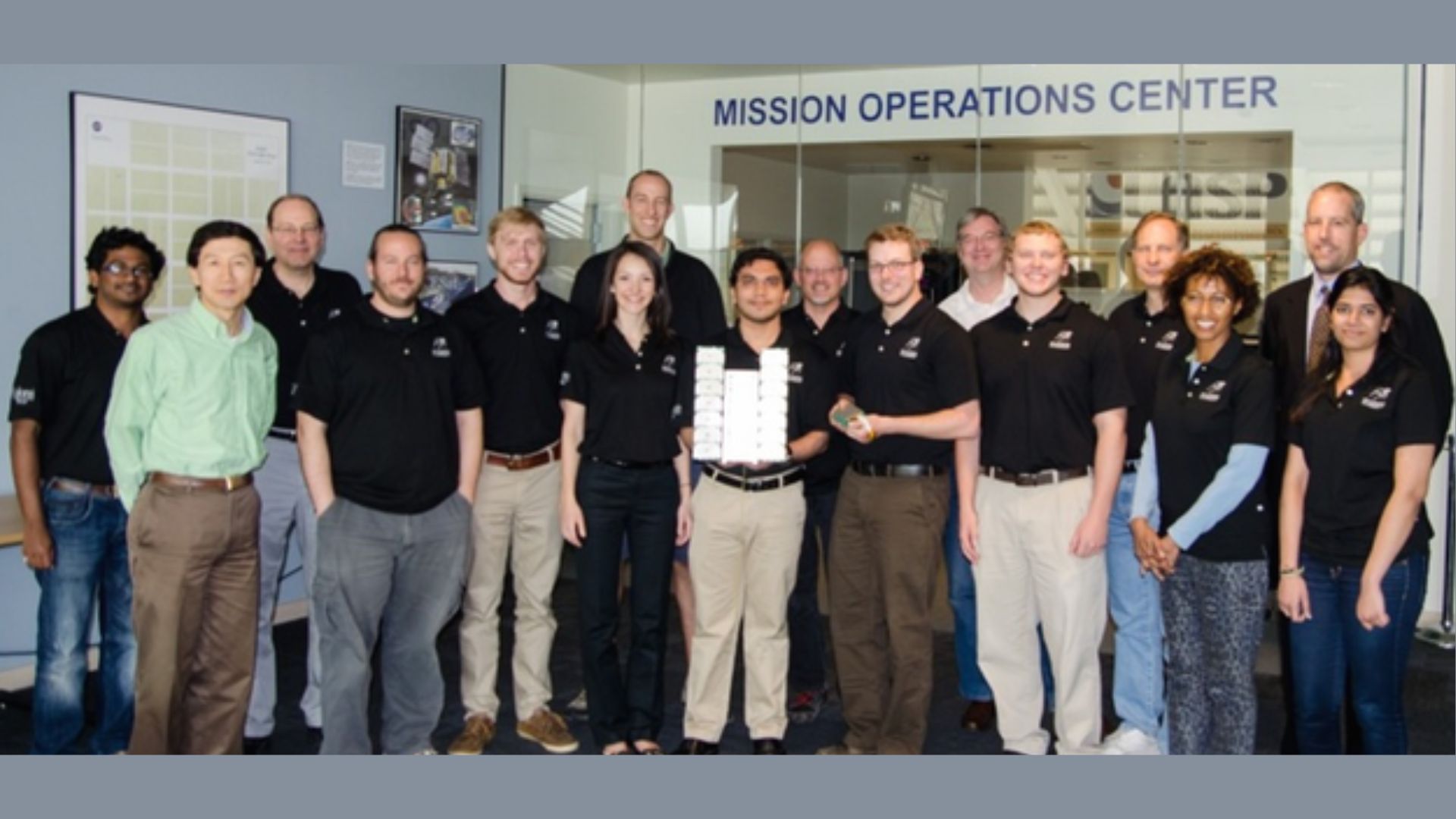
Founded a decade before NASA, the Laboratory for Atmospheric and Space Physics at the University of Colorado Boulder is on a mission to transform human understanding of the cosmos by pioneering new technologies and approaches to space science. LASP is the only academic research institute in the world to have sent instruments to every planet in our solar system.

